When you’re on the road, it’s crucial to let other drivers know what you plan to do next. California law allows hand signals when the turn signal lights fail to work. Let’s see what these are and how to use them to communicate with other road users.
Driving Hand Signals You Need to Know
Hand signals are gestures drivers use to tell others whether they’ll turn right or left, stop, or slow down. They can be a lifesaver when your blinkers or brake lights malfunction.
California law allows the use of hand signals whenever necessary. These should be given from the left side of the vehicle and include the following:
Stop
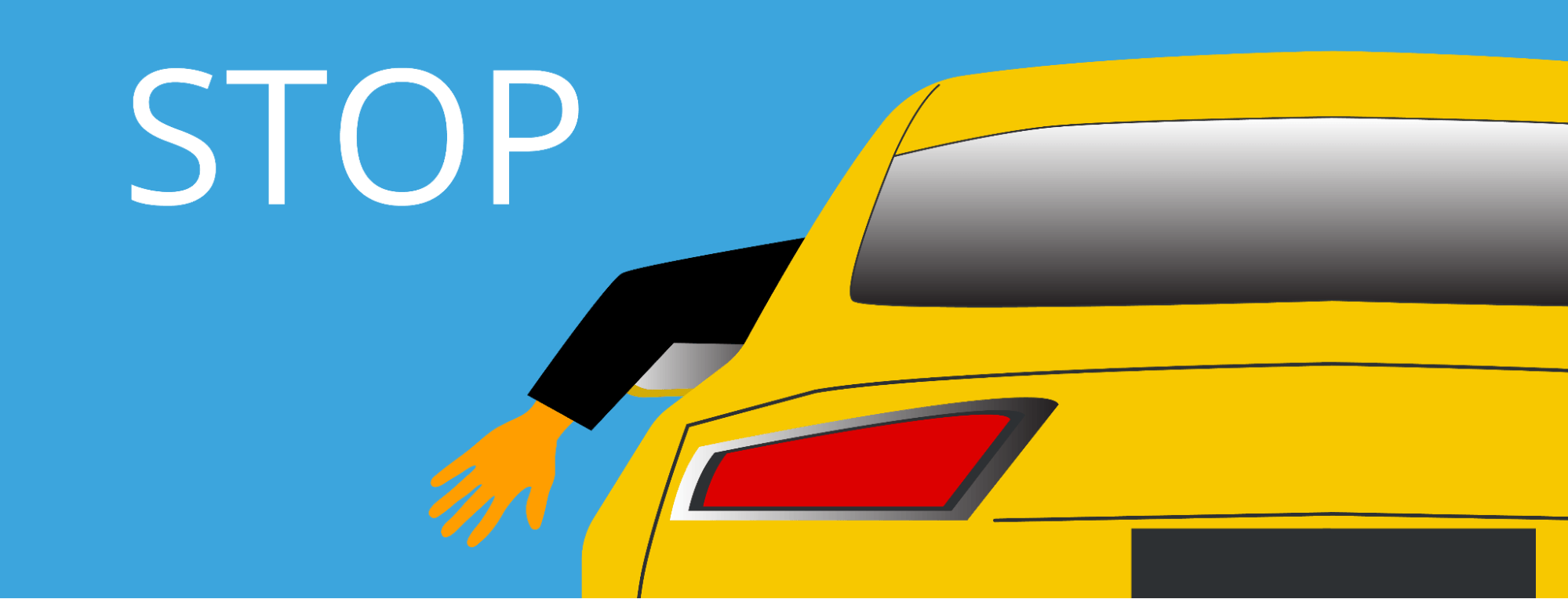
If you plan to stop or slow down, extend your left arm out of the window and point it down by bending your elbow at a 90-degree angle — with your palm facing backward.
Initiate this movement about 100 feet before stopping or slowing down and pull your arm back in only after you have come to a complete stop.
Brake gradually to give drivers behind you enough time to respond. Also, check your mirrors to make sure other drivers are slowing down, too.
Traffic school can help you keep a clean driving record, prevent insurance increases, and more!
Left Turn
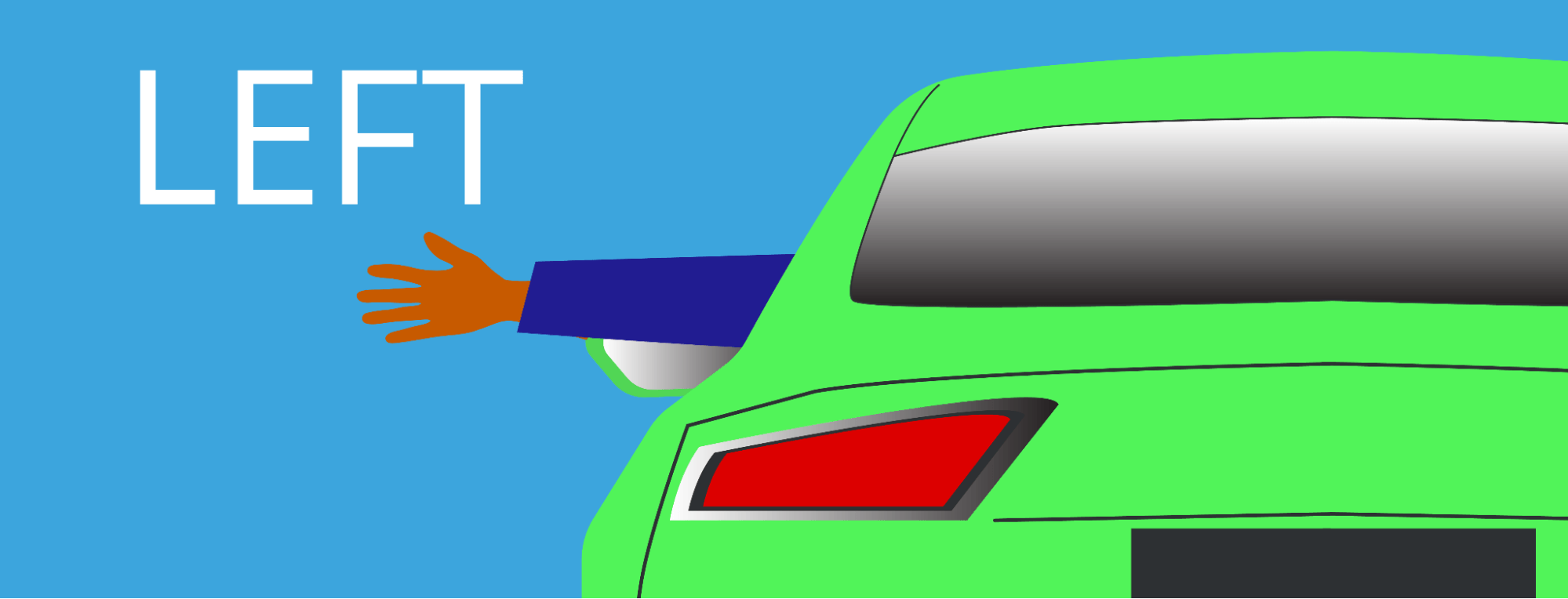
Fully extend your left arm and hand out of the window before turning left. The arm should be parallel to the ground.
Again, signal at least 100 feet before turning your vehicle. If you wait until the last minute, the other drivers may not have time to react.
Remember to check your mirrors and blind spots to ensure you can make the maneuver safely. Pull your arm back in as you turn left or switch lanes.
Right Turn
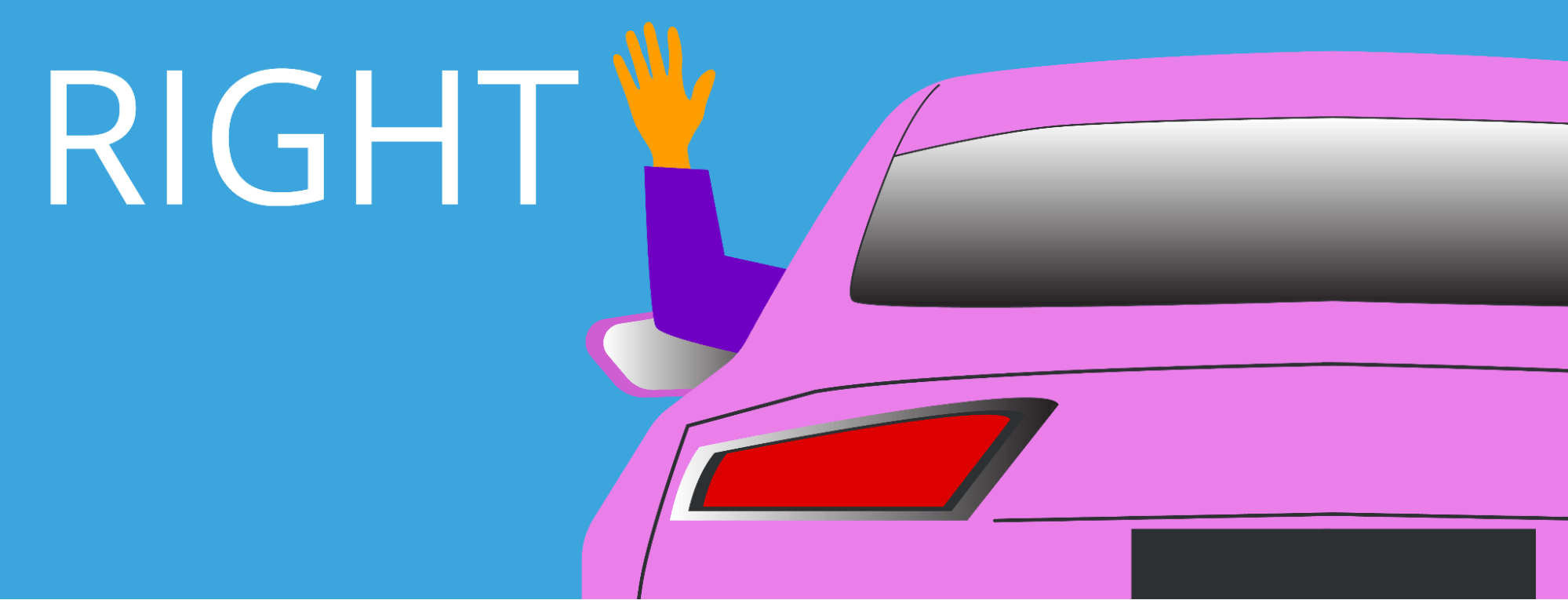
Stick your left arm out of the window and bend it upward from the elbow at a 90-degree angle, with your palm facing forward. Keep your hand firm and your fingers extended to make sure you’re sending the right message.
Start the signal about 100 feet before the turn, and slow down as you approach the turn. Double-check your right-side mirror before initiating the maneuver. Make sure the drivers on your right have seen your signal.
Sorry

Many people wonder what the “sorry” hand gesture is for driving. We all make mistakes! This one isn’t an “official” hand signal, but you can use it to apologize for minor driving mistakes, such as accidentally cutting someone off.
Raise your hand, sticking up two fingers in a “V” shape. Make the gesture visible but subtle. You don’t need to stick your arm out of the window, since the other driver(s) should be able to see your signal through the side windows.
Be aware that some drivers may not react as expected. The “V” sign means different things in different cultures and can be misinterpreted.
Pass Me
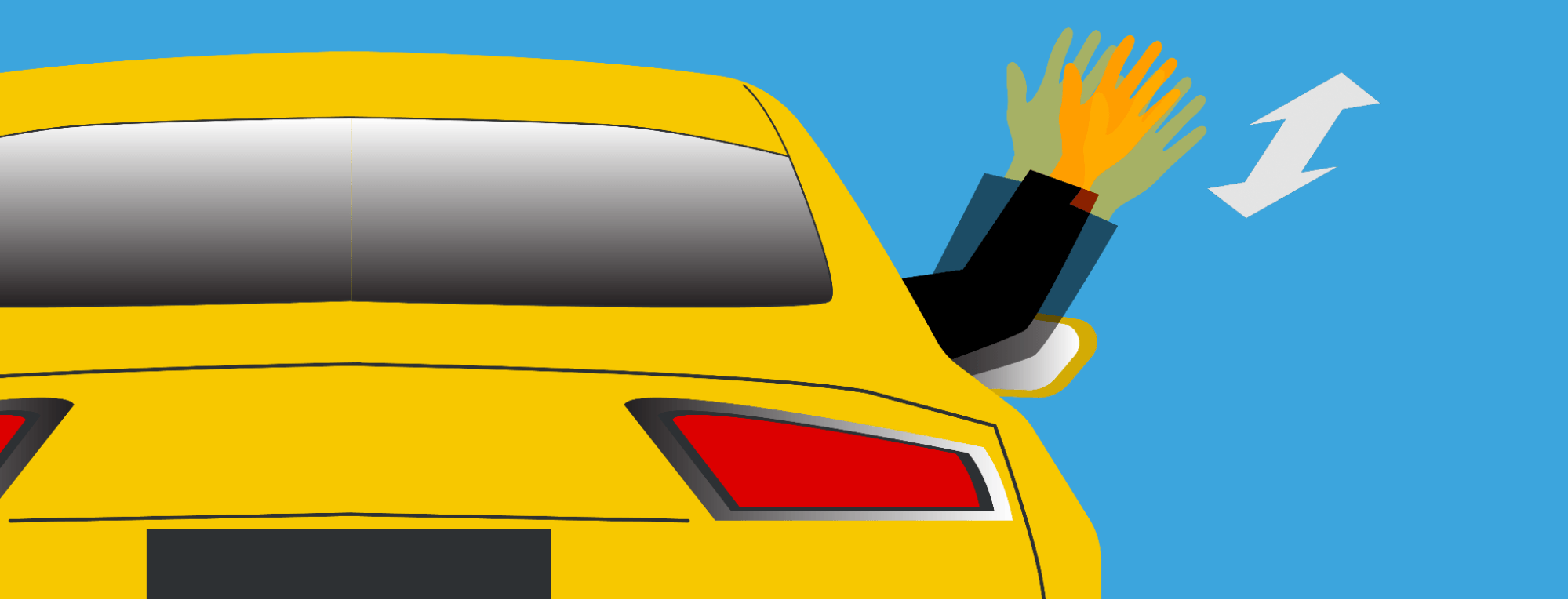
This hand signal isn’t officially recognized but can be helpful when you want to let other drivers overtake you.
Extend your left arm out of the window and sweep your hand. The sweeping motion should be wide and controlled so the driver behind you can see it. Use this signal only when you’re certain it’s safe for them to pass.
Other gestures, such as extending your left arm and moving it up and down, alert others of a potential hazard ahead. Drivers may also wave a hand to thank other road users.
However, you are not legally required to use these hand signals. Generally, it’s safer to keep both hands on the steering wheel — unless you must use your left arm to indicate a turn or stop.
When to Use Hand Signals for Driving
Generally, you must use the three basic hand signals — stop, right, and left — when your vehicle’s turn signals and/or light brakes don’t work.
However, there are several other situations where hand signals can be useful. Let’s see a few examples:
- You’re driving a vintage car
- When you’re changing lanes on a busy road
- When driving in bright sunlight
- When your turn signal lights are obscured by other cars
- In low-visibility conditions, such as when there is snow or fog (also be sure to follow California’s headlight law!)
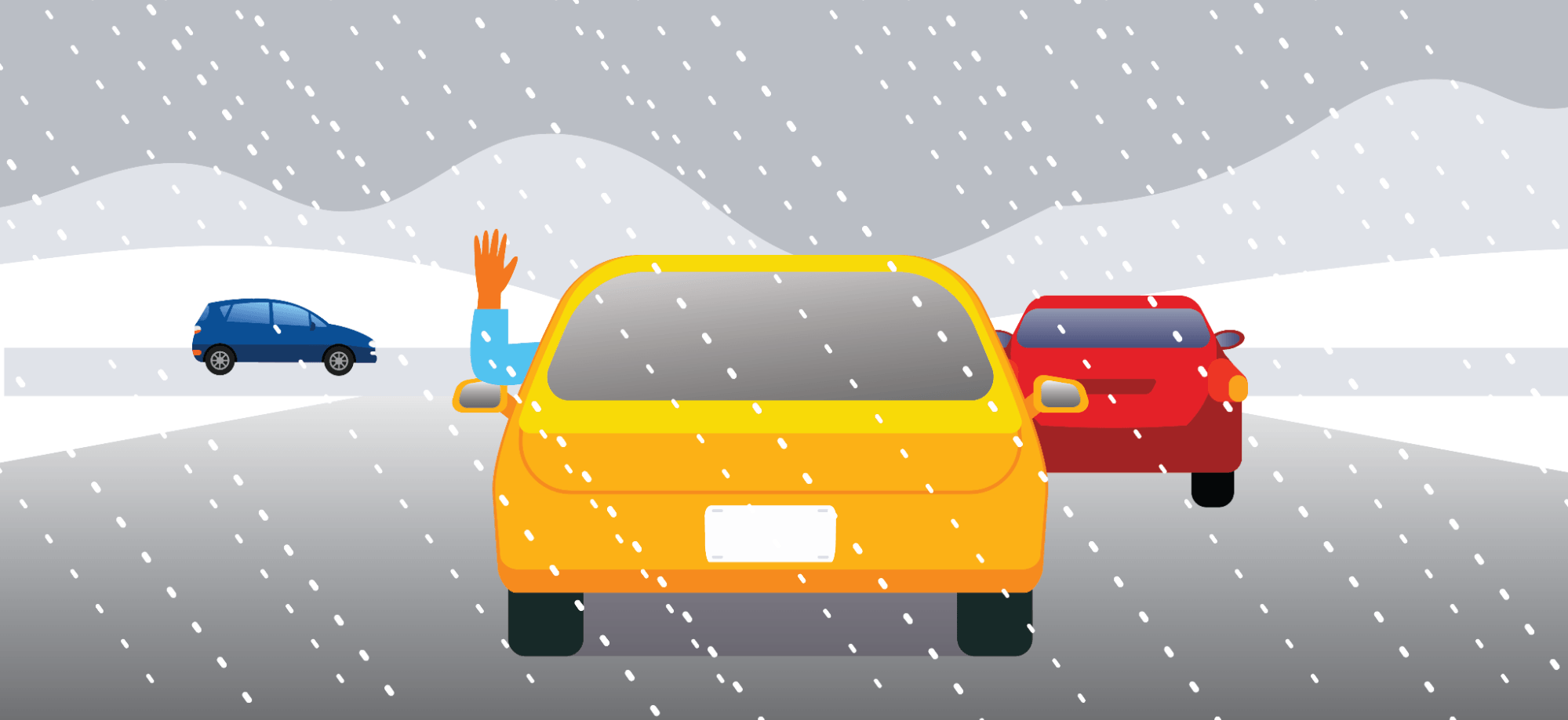
In some cases, you may use both hand signals and electric turn signals to communicate your intentions more clearly.
Say you’re driving in a high-traffic area and want to merge into a crowded lane. The heavy traffic or potential blind spots could prevent other drivers from seeing your turn signal lights.
Therefore, you may extend your hand out of the window and point in the direction you intend to move. You’ll also use your vehicle’s turn signals, but your hand gestures will act as a backup.
Safe Hand Gestures for Driving: Practical Considerations
Failing to use turn signals results in two million crashes each year. By comparison, distracted driving causes around one million car accidents annually.
Sometimes, you may not be able to use your car’s turn signals because of a technical issue. But even so, you can and should resort to hand signals to alert other road users of your next move.
With that in mind, here are some best practices to consider when using hand signals:
- Make It Obvious: Move your arms in a way that ensures maximum visibility. For example, you’ll want to extend your left arm all the way out when making a left turn at a blind intersection.
- Do It Ahead of Time: In California, drivers must signal at least 100 feet before performing a maneuver. However, Indiana and other states require motorists to signal their intentions at least 200 feet before turning left or right. So, check the local laws when driving in another state.
- Consider the Traffic Conditions: Hold those signals as long as necessary based on the traffic conditions. For example, in heavy traffic, you may need to keep your arm out for five seconds or longer so other drivers can notice and react.
- Prioritize Safety: Remember to hold the steering wheel firmly and always check your mirrors. When making hand signals, you’re only using one arm to control the car, which requires extra attention.
- Check for Visibility: Make sure the other drivers can see your hand signals. Consider wearing reflective gloves in low-light conditions, such as when driving in fog.
- Avoid Using Hand Signals at Night: If you’re driving at night and your turn signal lights stop working, it’s best to pull over. Turn on the hazard lights and call for help, or wait until morning to resume your trip.

Always signal your intentions in traffic, even when driving on small or less crowded roads. Most vehicles have blind spots, and if you fail to signal, you might collide with another car, bike, or motorcycle you didn’t see in your mirrors.
Final Thoughts
In this day and age, hand signals cannot replace electric turn signals. However, they still have their role and can be used as a backup. Plus, there are situations where they can increase your visibility on the road and potentially prevent a crash.
Note that failing to signal is a traffic offense and can result in one point on your license plus a $238 fine. Going to traffic school can mask that point, but you still risk putting yourself and others in danger by not driving responsibly.
Most students at Best Online Traffic School complete the course in just two or three hours. Plus, we submit their certificate of completion to the court and DMV the same day they pass their final exam.
Our self-paced course is licensed by the California DMV and accepted by all state courts. Upon completion, the point associated with your ticket will be hidden from insurance carriers, preventing your rates from going up.
Need one more reason to sign up? You can take the course for free and pay only after you pass. We also offer free unlimited exam retakes, 24/7 support, and audio read-alongs in English, Chinese, and Spanish.
Start traffic school for FREE today.
FAQs About Driving Hand Signals
Looking for more information about hand signals for driving? Here are the answers to some frequently asked questions.
Are hand signals still legal?
Yes, hand signals are legal in all states, including California. If your turn signals fail, you’re legally required to use hand signals until you can get the issue fixed.
What is the most important hand signal?
While all hand signals are important, you should pay special attention to the stop/slow down signal. Stopping your car affects all vehicles behind you. If you fail to signal, you can cause a chain of rear-end collisions.
This hand gesture is also more versatile than right or left turn signals. For example, you can use it in heavy traffic, when slowing down for pedestrians, or when encountering an obstacle on the road.
Can you get a ticket for using hand signals?
This practice is regulated by Sections 22100 – 22113 of the California Vehicle Code, so you shouldn’t get ticketed for using hand signals.
However, the police could pull you over and give you a ticket for a defective turn signals. Also, some officers are not familiar with the laws on hand signals and may issue a citation.
In such cases, consider fighting the charge in court or through a trial by written declaration to get the ticket dismissed.
Do you need to know hand signals for a driving test?
Yes, you do. In the U.S., driving tests may include questions about the three basic hand signals: stop/slow down, right turn, and left turn. The examiner may also ask you to demonstrate hand signals during the practice exam — though that’s not common.
What about bikes and motorcycles? Should they use hand signals on the road?
The use of hand signals is legally required for cyclists and motorcyclists, too. For the most part, these road users have the same responsibilities as car drivers.
